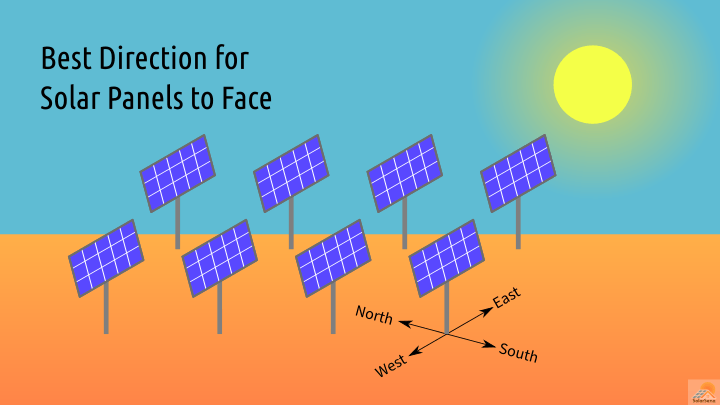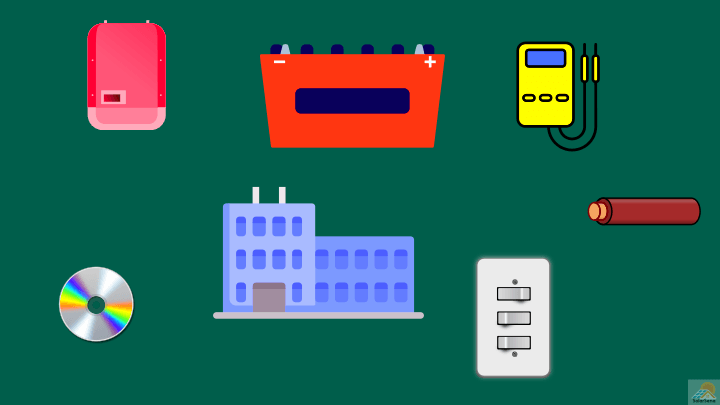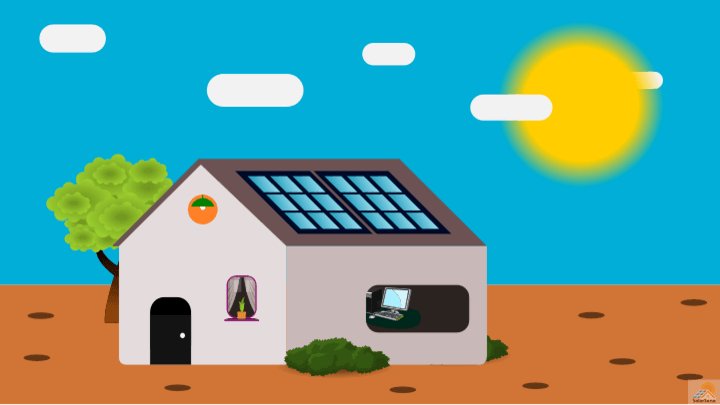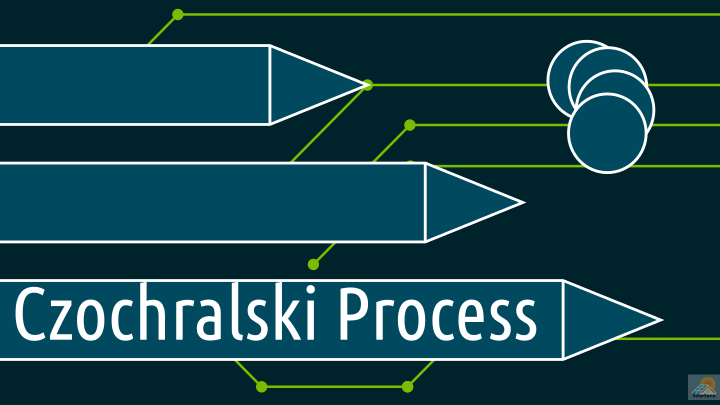As the price of solar panels falls, photovoltaic technology will continue to boom in the coming years. Some estimates by IRENA say solar will contribute around 13% of the global electricity generation by 2030. Today, we can see this rising trend in many countries, including America, Australia, the UK, Spain. More and more people are switching to solar to save electricity bills and due to environmental concerns. However, when you think of going for solar, many common questions pop up in your mind. Some of them are what is the best direction for solar panels to face, is my roof orientation correct, what is the correct angle, how does it matter.
In this article, we will clear some important questions related to the direction of solar panels.
What is the best direction for solar panels?
Solar panels’ performance reaches its peak when oriented in the right direction. The best direction is south if you live in the northern hemisphere and north if you live in the southern hemisphere. For people from America, Canada, Europe, India, or China, south is the ideal direction, while if you are from Australia, New Zealand, or South Africa, your panel should face the north direction.
Why is direction important?
We know solar panels absorb falling sunlight and convert it into electricity. The amount of electric energy produced is directly dependent on incident solar energy. So, the more sunlight hits your panels, the more electricity they will produce.
When solar panels are in front of the sun, the maximum sunlight hits them. And the maximum solar power is produced. But things are not as easy as it seems. It is often challenging to always keep panels facing the sun.
Uneven distribution of solar energy
To understand why the south direction is ideal for the northern hemisphere, we need to study some planetary science of Earth.
On Earth, the amount of sunlight varies from place-to-place, season-to-season, and hour-to-hour. It is because the earth is spherical, and the distance between the earth and the sun changes time-to-time. It makes solar energy distribution uneven across the globe and is also responsible for causing seasons.
Further, our earth’s axis of rotation is inclined by 23.4°. So, when America receives maximum sunshine, Australians have the least. And when Australia has a maximum sun, Americans have a cold. The infographic below explains the same.

On average, the region encompassing around the equator receives maximum sunlight across the year. As we move away from the equator, toward the poles, solar energy received per unit area by the earth’s surface decreases.
A more practical way to understand this is by looking at the sun in the sky. If you live in America or a country from the northern hemisphere, the sun is directly overhead in the months of summer, while in winter, the sun lies in the southern sky.

The seasonal movement of the sun definitely complicates the selection of the right direction that solar panels should face.
Face your panels to the south
From now on, we will just believe that you live in America or a country from the northern hemisphere to make things simple. But if you are from Australia or a country from the southern hemisphere, just swap “north” and “south” in the following text
Since we want the maximum sunshine to fall on our solar panels, panels should always face the sun. However, for fixed solar panels, it is not possible. Sun is going to move from the center of the sky to the south as summer ends. And it, as we know, moves east to west over the day.
Thus, for fixed panels, there is no way to always have the panels in front of the sun.
A way to solve this dilemma is to have solar trackers. Solar trackers track the motion of the sun in the sky and direct panels toward the sun. They can track the sun day-to-day as well as season-to-season. However, solar trackers are an uncommon choice for homeowners and small commerce. Furthermore, if you are planning for a roof-mount installation, solar trackers are out-of-option.
We have four options available: north, east, west, and south.

North is the worst direction to face solar panels because it receives a minimum amount of solar energy throughout the year. Conversely, the south is the most favorable direction since panels will receive sun throughout the day and in all seasons.
In the case of east and west, solar panels facing east will only produce electricity in the morning, and panels toward the west will only work from the late afternoon.
From the above, it is crystal clear why the south is the best direction.
West is also a promising direction
Although the south is an ideal direction, it may not be the best in some cases. To understand how the west can sometimes be a better option, we need to study the below graph. The graph displays a typical power demand of a household.

During the night, power usage is at its minimum. People use the least electric equipment and electronic devices since they are sleeping. As the sun rises, the first spike in power demand is seen in the graph. It is because of an increase in activities, like preparing breakfast, running the washing machine, using the microwave. The spike is called the morning ramp.
Usually, after 9 am, people go to work. So, a small decline in electricity usage follows the morning. As the late afternoon approaches, the second spike is observed. The surge in power consumption is due to people, after busy work hours, are using most home appliances. Evening activities, like preparing tea, making supper or dinner, watching television, using the air conditioner, using the computer, drastically raise power needs.
Solar plots
The plots of solar power production are quite different from the household’s power usage curve. The photovoltaic system produces electricity from dawn to dusk. When solar panels are toward the south, the peak in solar power is obtained at noon. And when panels are facing west, the peak is around the late afternoon.
It is obvious from the above that solar panels facing south give the peak when the household’s power demands are lower. In other words, solar power is available when we barely need it. In the evening, when we really need electricity, the sun is going to set, making solar power unable.
Things are improved a bit in the case of panels facing west. Since west-facing panels perform the best in the late afternoon, the time when power needs start to rise. We can see the overlap of both curves in the figure.
Time-of-use
If the utility power has a time-of-use plan, which means charging higher rates when electricity demands are higher, one can save more bills by using west-facing panels. Generally, utility providers charge higher in the afternoon and evening. And we know panels facing west generate maximum power in the late afternoon. Thus, the west direction has definitely a monetary advantage over the south.
Storage battery
Things certainly change if storage batteries are a part of the photovoltaic system. In fact, it does not matter when solar power is produced since batteries can store excess solar power and supply the stored energy whenever the demand peaks. Or, put differently, at midday, batteries store solar power, and in the evening, they supply the stored power to our homes. Backup batteries definitely eliminate the concerns related to the evening peak.
The previous paragraph also holds when net metering is available since excess solar power can be traded with energy credits, which we can use at night.
What if the roof does not agree?
For a ground mount system, we can install solar panels in whichever direction we want. But we don’t have much flexibility for a root-mount system. Roofs are fixed and oriented in a particular direction. The south-facing roof is the most favorable choice to go for. Nevertheless, the west and east also work very well if the roof is not oriented in the south.
Having panels on both sides of the roof will be advantageous when going for an east-west installation. The system will work in the morning as well as in the late afternoon.
At what angle should solar panels be?
Like the direction, the angle of solar panels is an important and decisive factor in solar power generation. The correct angle can boost power generation to a significant amount. As per practical standards, the tilt angle of solar panels should be equal to the latitude of the region.
Latitude is a measure of how far a point is from the equator. The equator is at 0° latitude, while the poles are at 90° latitude. Any points, other than the poles and the point on the equator, will always have values between 0° and 90°.
Remember, in the previous sections, we have mentioned that solar power is maximum when panels are facing the sun. To be more specific, solar rays striking solar panels must be perpendicular to the panels. And it happens when the inclination of panels equals the latitude of the place.

As we can see from the above diagram, power generation is inefficient when the tilt angle exceeds or is behind the latitude. Perpendicular panels reflect fewer striking rays and consequently better absorb them. Better absorption of sunlight means more solar power.
Different latitudes
Earth is a sphere, and latitudes divide the earth vertically. They are lines that run parallel to the equator. From the below map, most of the United States falls between latitude 30° and 45°. Thus, Americans must always tilt their solar panels between 30° and 45°.

The value of latitude does not change significantly within a small geographical region. For example, in a city, it is safe to assume latitude is practically constant. Thus, the tilt angle is the same throughout the city and will not change by different Zip Codes of a city.
The table below covers some common American cities with respective tilt angles.
| City | State | Tilt angle |
|---|---|---|
| Los Angeles | California | 34 |
| San Diego | California | 33 |
| San Francisco | California | 38 |
| Austin | Texas | 30 |
| Houston | Texas | 30 |
| Charlotte | North Carolina | 35 |
| Raleigh | North Carolina | 36 |
| Phoenix | Arizona | 33 |
| Newark | New Jersey | 41 |
| Salt Lake City | Utah | 41 |
| Atlanta | Georgia | 34 |
If your city is not on the above list, simply google it to find the latitude of your place.



